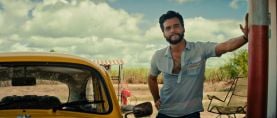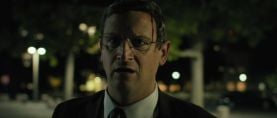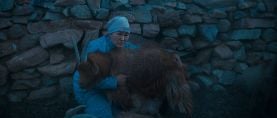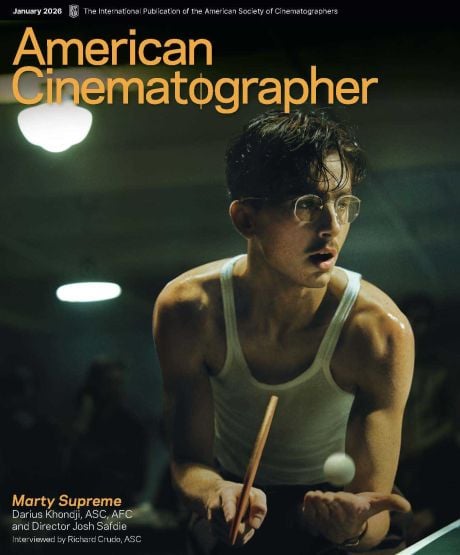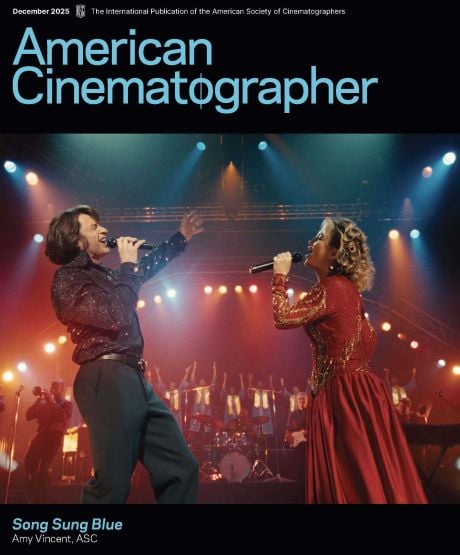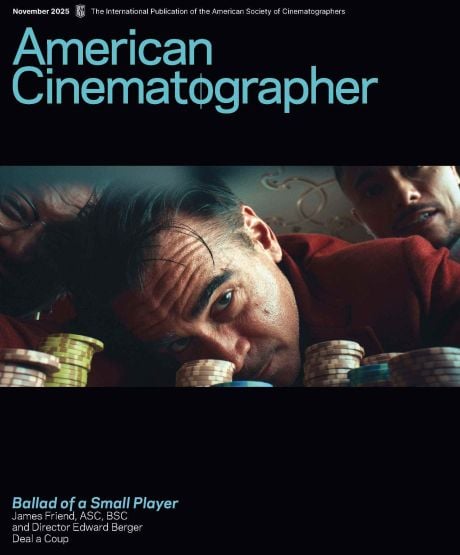
Shooting Imax for Drake's "Nokia"
Cinematographer Kelly Jeffrey and director Theo Skudra detail the making of the rapper-singer's larger-than-life music video.
Director Theo Skudra knew there was only one way to give the music video for Drake’s “Nokia” the grand scale he envisioned: Imax.
He recalls that when he first heard the single, which is featured on Some Sexy Songs 4 U, “I sat up. It was one of those moments where the energy of the song really reminded me of all the videos I loved growing up; they were never the huge-narrative, speed-boat, explosion stuff, [but] the B-side, black-and-white, practical-sets work. Maybe it was because I grew up the son of a black-and-white photographer!”
Skudra also knew that the budget a major artist like Drake brings to a music video would enable numerous ways to heighten that aesthetic. The artist himself was taken with the idea of doing something in the vein of Director X and Hype Williams, he adds. “His first idea was to get roller girls in there, and from that it slowly built from a black-and-white, practical-set music video to something that we could make at a level that only Drake can achieve. It went from, ‘Okay, let’s not just have a car against a white background, let’s make it a monster truck and add a boat, and have sparks flying with welder masks. Let’s make it all-chrome parts. Everything worked like that. We took a trope of those videos, expanded on it, added our scale and made it our own. What better way than Imax to achieve that?”
Cinematographer Kelly Jeffrey, a frequent collaborator with Drake’s OVO Sound, was up for the challenge. Even though he had never shot Imax, he enjoyed the discipline of shooting film. "When everyone was buying the Red Scarlet and film labs were closing, a friend [director Graham Foy] and I bought a [Arri] 435 and we were doing tiny music videos with just a few rolls of film,” he recalls. “That meant everything had to be really designed and planned out, because we had such a limited amount of stock. I think that was a really important time for me in terms of learning how to do things minimally and simply. It’s more focused — you spend more time getting only what you need.”

That meticulous approach was necessary for “Nokia,” where the team had 22 1,000' rolls of 65mm Kodak Vision 500T 5219, which each can capture three minutes of footage. This meant no take would include the entire song, but would be carefully crafted around the exact verses needed for the final cut. The negative would be graded to black-and-white by Miles Bevan at Studio RM.
“None of us had worked with Imax before, so there was the fear of the unknown,” says Jeffrey. “It happened so quickly … Every other functioning Imax camera was on [Christopher Nolan’s] The Odyssey. We had enough time to reg test the camera — an Imax MSM 9802 — to make sure it was okay [after being shipped] directly from IMAX, but it was immediately going to Nolan after, so we had very limited time and couldn’t test as much as I would have liked. But once Imax hooked us up with Scott Hoffman, who was the tech, and Jeff Packer, who was the 1st AC and had a lot of Imax experience, it relieved some of that stress. If the camera went down, we [would have been] sitting on two soundstages and the most insane sets with no camera!”
Skudra is effusive about the Imax team: “At one point on the first day, the camera went down, and the Imax team was like a pit crew — they all rushed in and got to work. It must have been 60 seconds later that we were back up and running. One joy of filming in Imax was seeing the ecosystem around it. That’s why it works so well.”

The director prepared animatics for each take and scene so the schedule could be hyper-accurate and the small footage ratio could be used to the utmost. He notes, “As much as this was a technical achievement, all of this really came from the trust that Drake showed us. The way I pitched it to him was, he’s done SNL twice, and this was going to be very similar to that: We’d have a clear understanding before we walked in there on the day, but we’d have to kind of treat it like we’re going to rush from this to that.
“There were a lot of setups that had to get knocked out for us to achieve the video, and there wasn’t any room for error,” Skudra continues. “If we’d lost one of those sets, I would have gotten into editing and we wouldn’t have anything to fill it in. No take was all the way through the song. If any of these things fell apart, the video would be a bust. That was nerve-wracking, but in my opinion, it ended up becoming the video’s strongest element; it moves constantly from one to the next without looking back.”
Both Skudra and Jeffrey are particularly proud of the lighting in “Nokia.” Jeffrey breaks down the different looks: “The two sets we started discussing lighting for were the dancing scene and the parade. We wanted a big, soft, top single source, which felt pretty contemporary, with the minimal space for the dancing. We kept calling the parade ‘the ghost parade.’ We wanted it to feel kind of like it could be nighttime street lights, but a little mysterious, a lot of haze, not seeing everything. That felt a little more old-school — big, hard sources lighting up parts of the scene but not all of it. The dance scene had a more contemporary feel, and this had an older-Hollywood feel. And then, I wanted to merge both worlds so that nothing felt too stuck in one specific time.”


In prep, Skudra and Jeffrey referenced lots of medium- and large-format still photography. “Nokia” was shot on the Imax MK IVs (rehoused Hasselblad lenses), primarily an 80mm and 110mm. Jeffrey explains, “There’s a scene when you’re looking at this huge wide of Drake in the middle of all these dancers, but only Drake is in focus. It was shot on the 80mm. It’s a look that people often want — a wide angle of view with very select focus — but can’t achieve unless you’re shooting on a larger format.”

Skudra notes that this portion of the video was his favorite to shoot. "Even on a smaller screen, you get this sense of depth and resolution and clarity and texture that you really appreciate once those dailies come back from Imax," he says. "Just seeing that much scope and movement so well designed, with every department coming together and working in a way that makes it alive, seeing Tanisha Scott’s choreography, just seeing all the different departments executing for such a large format, gave an extra sense of love to what everyone was able to achieve.”
Watch Drake's "Nokia" Below:
Unit stills by Norm Wong. Video screenshots courtesy of YouTube.
